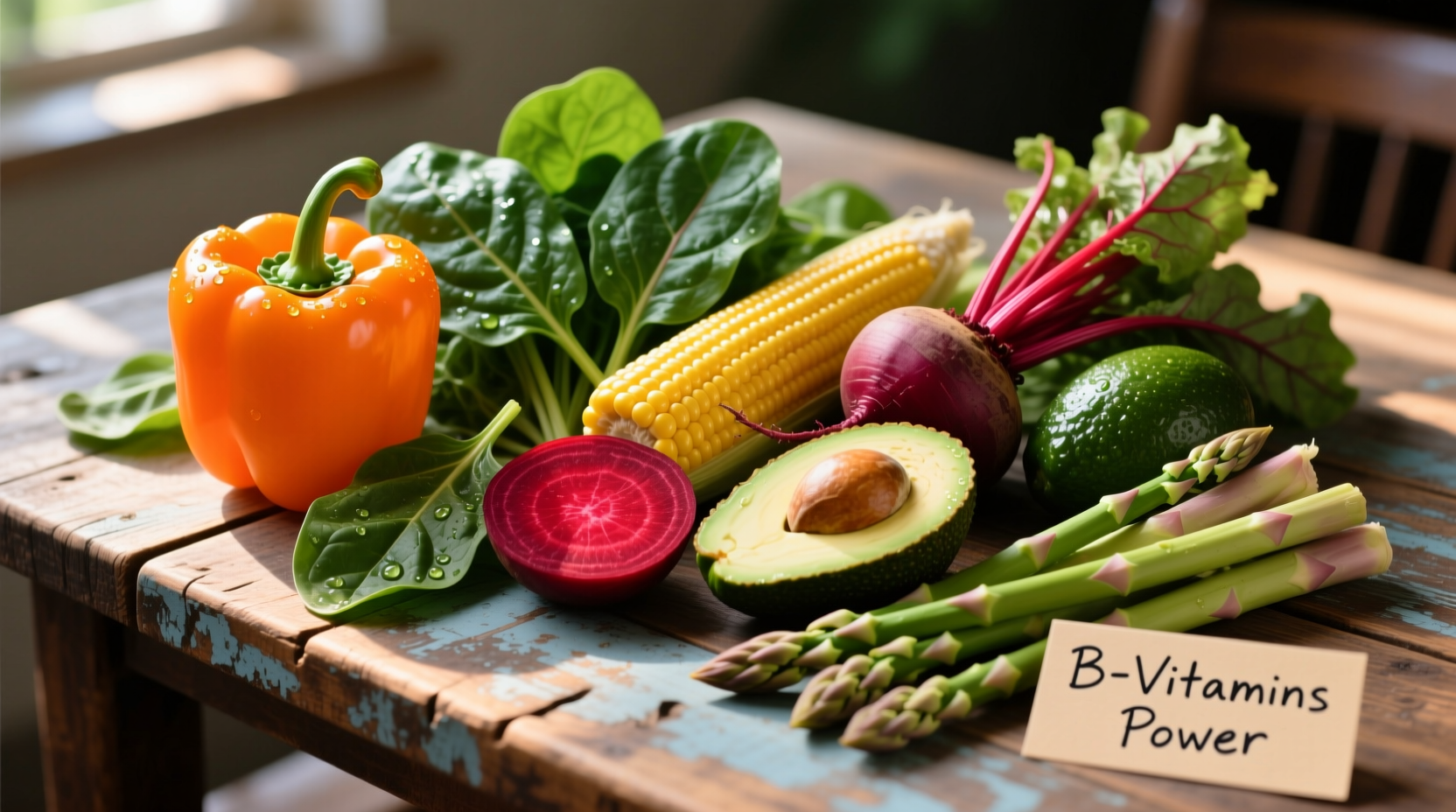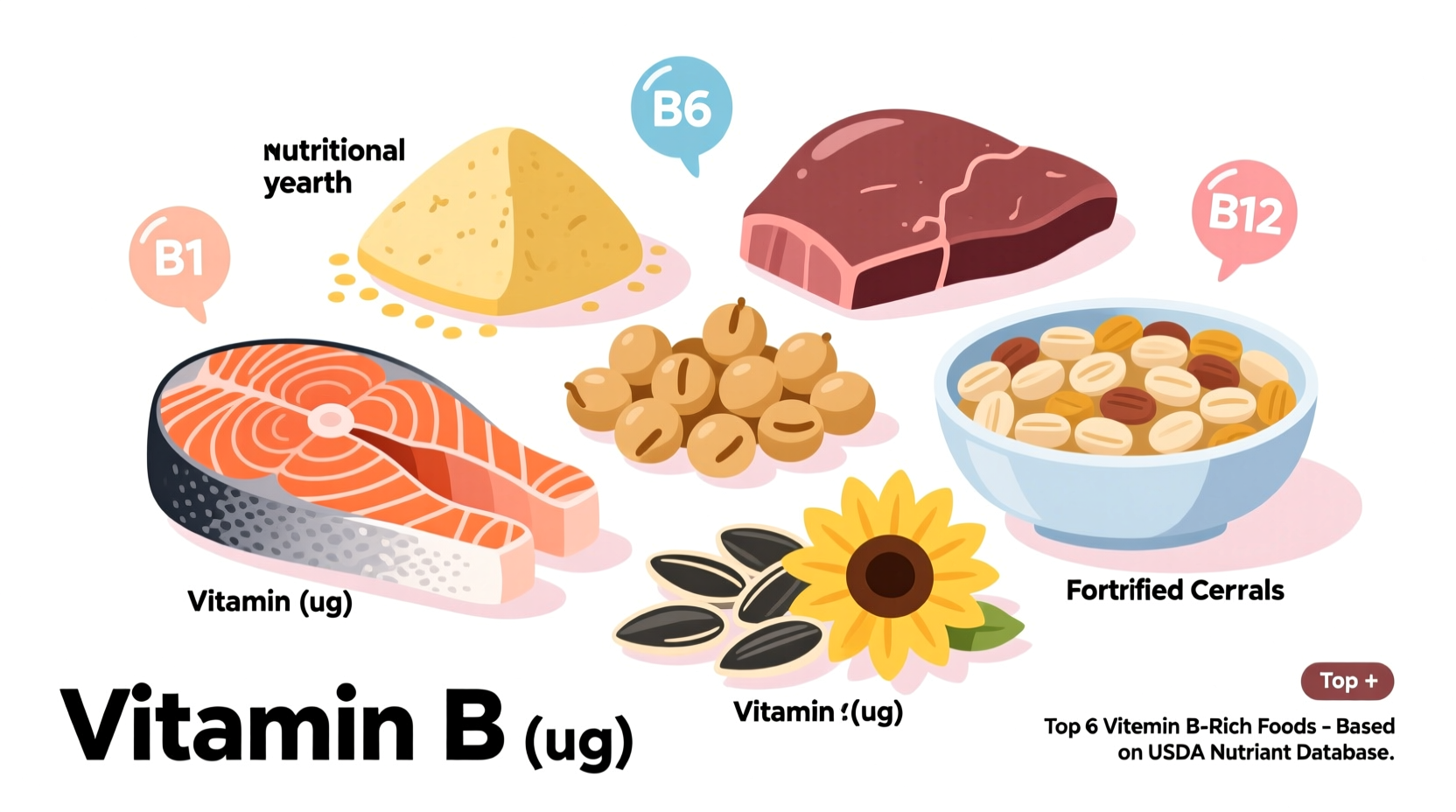Understanding which foods pack the most powerful vitamin B punch can transform your energy levels, cognitive function, and overall health. This comprehensive guide cuts through the confusion about the eight distinct B vitamins—each with unique functions and dietary sources—to deliver precise, science-backed information you can trust. Forget generic advice; we've analyzed nutrient density data from authoritative sources to pinpoint exactly which foods deliver maximum benefits for each essential B vitamin.
The Vitamin B Complex: Why Each Type Matters
Many people mistakenly treat "vitamin B" as a single nutrient, but it's actually a family of eight water-soluble vitamins that work both independently and synergistically. These micronutrients play critical roles in energy metabolism, brain function, red blood cell formation, and DNA synthesis. Since your body doesn't store most B vitamins, regular dietary intake is essential for maintaining optimal health.
Each B vitamin serves unique physiological functions. For example, B12 is crucial for neurological function while B9 (folate) is vital during pregnancy for fetal development. This explains why focusing on specific food sources for each vitamin matters more than seeking generic "high vitamin B" foods.

Top Food Sources by Vitamin Type
Vitamin B1 (Thiamin): Energy Metabolism Essential
Thiamin helps convert carbohydrates into energy and supports nerve function. The highest food sources include:
- Nutritional yeast (9.6mg per 100g) - nearly 800% of daily value
- Sunflower seeds (1.97mg per 100g)
- Pork chops (0.88mg per 100g)
- Black beans (0.42mg per 100g)
For practical incorporation, sprinkle two tablespoons of nutritional yeast on popcorn or roasted vegetables for a cheesy flavor boost with massive thiamin benefits.
Vitamin B2 (Riboflavin): Cellular Growth Promoter
Riboflavin maintains healthy skin and supports energy production. The richest sources are:
- Lamb kidneys (3.4mg per 100g) - 262% DV
- Beef liver (2.9mg per 100g)
- Goat cheese (1.5mg per 100g)
- Almonds (1.0mg per 100g)
One cup of milk provides about 27% of your daily riboflavin needs while also offering excellent calcium absorption.
Vitamin B3 (Niacin): Cholesterol Regulator
Niacin supports digestive health and converts food to energy. The most concentrated sources include:
- Tuna (22.1mg per 100g) - 138% DV
- Liver (14.9mg per 100g)
- Chicken breast (11.4mg per 100g)
- Peanuts (13.2mg per 100g)
Just three ounces of canned tuna delivers 100% of your daily niacin requirement while providing lean protein.
| B Vitamin | Top Food Source | Amount per 100g | DV Percentage | Practical Serving Size |
|---|---|---|---|---|
| B1 (Thiamin) | Nutritional yeast | 9.6mg | 797% | 2 tbsp (10g) |
| B2 (Riboflavin) | Lamb kidneys | 3.4mg | 262% | 3 oz (85g) |
| B3 (Niacin) | Tuna | 22.1mg | 138% | 3 oz (85g) |
| B5 (Pantothenic acid) | Shiitake mushrooms | 3.6mg | 72% | 1 cup cooked (156g) |
| B6 (Pyridoxine) | Tuna | 1.9mg | 112% | 3 oz (85g) |
| B7 (Biotin) | Liver | 100mcg | 333% | 3 oz (85g) |
| B9 (Folate) | Lentils | 534mcg | 134% | 1 cup cooked (198g) |
| B12 (Cobalamin) | Clams | 98.9mcg | 4,121% | 3 oz (85g) |
Practical Integration Strategies
Knowing which foods contain high levels of B vitamins is only half the battle—you need practical ways to incorporate them into your daily diet. Here's how to maximize absorption and retention:
Cooking Methods That Preserve B Vitamins
Since B vitamins are water-soluble, they can leach into cooking water. Use these techniques to preserve nutrients:
- Steam vegetables instead of boiling to retain water-soluble vitamins
- Use cooking liquid from vegetables in soups or sauces
- Store B vitamin-rich foods in airtight containers away from light
- Avoid excessive heat when cooking meats to preserve B vitamins
Dietary Patterns for Comprehensive B Vitamin Coverage
For complete B vitamin coverage, consider these dietary patterns:
- Breakfast: Greek yogurt with almonds and sunflower seeds (B2, B3, B7)
- Lunch: Lentil soup with spinach (B9) and nutritional yeast topping (B1)
- Dinner: Grilled salmon (B3, B6, B12) with roasted shiitake mushrooms (B5)
Contextual Considerations for Optimal Intake
While food sources should be your primary vitamin B strategy, certain life circumstances require special attention:
When Food Alone May Not Suffice
Several factors can increase your B vitamin requirements or decrease absorption:
- Vegans and vegetarians: B12 is naturally found only in animal products, making supplementation essential (NIH Office of Dietary Supplements, https://ods.od.nih.gov/factsheets/VitaminB12-HealthProfessional/)
- Older adults: Reduced stomach acid decreases B12 absorption after age 50
- Pregnant women: Folate requirements increase by 50% during pregnancy
- Medication users: Certain medications like proton pump inhibitors reduce B12 absorption
Recognizing Deficiency Symptoms Early
Early signs of B vitamin deficiencies often manifest as:
- Fatigue and weakness (B12, B6)
- Mood changes and depression (B6, B9, B12)
- Skin rashes or cracks at mouth corners (B2)
- Numbness or tingling in extremities (B12)
If you experience persistent symptoms, consult a healthcare provider rather than self-treating with supplements.
Maximizing Your Vitamin B Intake
Understanding which foods contain the highest concentrations of each B vitamin empowers you to make informed dietary choices that support your energy levels, cognitive function, and overall health. Remember that variety is key—no single food provides all B vitamins in optimal amounts. By incorporating a diverse range of the foods highlighted in this guide, you'll naturally boost your intake of these essential micronutrients without needing supplements in most cases.
Frequently Asked Questions
Can I get enough vitamin B from plant-based foods alone?
While most B vitamins can be obtained from plant sources, vitamin B12 is naturally absent from plant foods. Vegans must supplement or consume fortified foods to meet B12 requirements, as deficiency can cause irreversible neurological damage over time.
How does cooking affect vitamin B content in foods?
Water-soluble B vitamins can leach into cooking water during boiling. Steaming, stir-frying, or using minimal water preserves more nutrients. Some B vitamins like niacin actually become more bioavailable when foods are cooked.
What's the difference between folate and folic acid?
Folate is the natural form found in foods like leafy greens and lentils, while folic acid is the synthetic form used in supplements and fortified foods. Your body processes folate more efficiently, making food sources preferable when possible.
Can I overdose on vitamin B from food sources?
Since B vitamins are water-soluble, excess amounts typically flush from your system. However, extremely high intakes from supplements (not food) of certain B vitamins like B6 can cause neurological issues. Food sources pose virtually no overdose risk.











 浙公网安备
33010002000092号
浙公网安备
33010002000092号 浙B2-20120091-4
浙B2-20120091-4